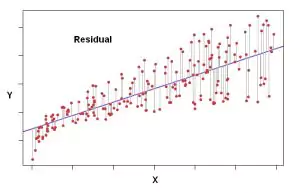In the field of statistics, critical values play a crucial role in hypothesis testing and constructing confidence intervals. They provide a framework for making inferences about populations based on sample data, which is essential to understand for students that need help with statistics homework. In this article, we will delve into the concept of critical values, explore their significance in statistical analysis, and learn how to find and interpret them effectively.

✅ AI Essay Writer ✅ AI Detector ✅ Plagchecker ✅ Paraphraser
✅ Summarizer ✅ Citation Generator
The Definition of Critical Value
A critical value is a threshold or boundary that defines regions in the sampling distribution of a test statistic. It represents the point at which a test statistic is considered statistically significant. Critical values take into account the uncertainty present in the sample data and help determine the validity of results obtained from hypothesis tests and confidence intervals.
Hypothesis Testing and Statistical Significance
Hypothesis testing involves making decisions about population parameters based on sample data. Critical values play a vital role in determining whether the results of a hypothesis test are statistically significant. When a test statistic exceeds the critical value, it suggests that the observed effect exists in the population, allowing us to reject the null hypothesis. By defining rejection regions for the null hypothesis, critical values provide a clear boundary between nonsignificant and significant results.
Understanding the Sampling Distribution and Significance Levels
The sampling distribution of a test statistic represents the range of values that the test statistic can take. Critical values are directly related to significance levels, often denoted as α (alpha). The significance level specifies the probability corresponding to the critical value within the sampling distribution. Commonly used significance levels include 0.05 (5%) and 0.01 (1%).
Two-Sided Tests and One-Sided Tests
In statistical analysis, hypothesis tests can be categorized as two-sided or one-sided tests. Two-sided tests have two rejection regions, requiring two critical values to define them. The significance level is divided equally between the two rejection regions. On the other hand, one-sided tests have only one rejection region, necessitating a single critical value. One-tailed tests are used when we are interested in detecting effects in only one direction.
Confidence Intervals and Critical Values
Critical values are not only applicable to hypothesis testing but also play a crucial role in constructing confidence intervals. Confidence intervals provide a range of values within which we can expect the population parameter to fall. The critical values used in constructing confidence intervals are the same as those used in hypothesis testing. The confidence level, which is equal to 1 minus the significance level, determines the width of the interval.
Finding Critical Values: Methods and Tools
Finding critical values can be complex, and it is often done using statistical software or reference tables. Statistical tables provide critical values based on the specific test statistic, significance level, and degrees of freedom. Various statistical distributions, such as the z-table, t-distribution table, chi-square table, and F-table, are commonly used for different types of tests. These tables are invaluable resources for researchers and statisticians.
Conclusion
Critical values are fundamental elements of statistical analysis. They enable researchers to make informed decisions regarding the significance of their findings and the accuracy of their conclusions. By understanding the concept of critical values, their calculation methods, and their role in hypothesis testing and confidence intervals, you can enhance your ability to analyze data and draw meaningful inferences.
FAQ
What is the significance level associated with critical values?
The significance level, often denoted as α (alpha), is the probability threshold used to determine critical values. It represents the maximum probability of observing a test statistic beyond the critical value under the assumption that the null hypothesis is true. Commonly used significance levels include 0.05 (5%) and 0.01 (1%).
Can critical values vary for different types of statistical tests?
Yes, critical values can vary depending on the type of statistical test being conducted. Different tests, such as z-tests, t-tests, chi-square tests, and F-tests, have their own specific critical values. The choice of test statistic and its corresponding sampling distribution determines the critical values associated with a particular test.
How can I find the critical value using statistical software?
Statistical software packages, such as SPSS, R, or SAS, provide built-in functions and commands to find critical values. You can specify the test statistic, significance level, and any additional parameters required for the specific test. The software will then calculate and provide the corresponding critical value based on the chosen parameters.
Is it possible to determine critical values manually using statistical tables?
Yes, it is possible to determine critical values manually using statistical tables. Statistical tables, such as the z-table, t-distribution table, chi-square table, or F-table, provide critical values for various levels of significance and degrees of freedom. By looking up the appropriate table and finding the intersection of the significance level and degrees of freedom, you can identify the critical value.
Are there different critical values for different levels of confidence?
Yes, the choice of confidence level determines the critical values used in constructing confidence intervals. The confidence level represents the desired level of certainty or probability that the true population parameter falls within the interval. Common confidence levels include 90%, 95%, and 99%. Higher confidence levels require wider intervals and, consequently, different critical values to account for increased certainty.
Remember, critical values are essential tools in statistical analysis, enabling researchers to make informed decisions regarding hypothesis testing and the construction of confidence intervals. Utilizing statistical software and reference tables can greatly assist in finding the appropriate critical values for your specific analyses.
Follow us on Reddit for more insights and updates.





Comments (0)
Welcome to A*Help comments!
We’re all about debate and discussion at A*Help.
We value the diverse opinions of users, so you may find points of view that you don’t agree with. And that’s cool. However, there are certain things we’re not OK with: attempts to manipulate our data in any way, for example, or the posting of discriminative, offensive, hateful, or disparaging material.